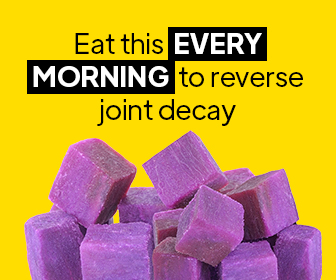Diet trends come and go, but one thing remains constant: everyone wants quick results. Keto, intermittent fasting, paleo, plant-based, low-carb—you name it, I’ve probably tried it at some point in my life. And while some of these diets gave me more energy or helped me shed pounds, others left me feeling weaker, achy, and surprisingly fragile. What I didn’t realize back then is that many popular diets can unintentionally harm your bones if they aren’t done the right way.
I first noticed this connection when I was experimenting with intermittent fasting. The weight came off quickly, and I loved how light I felt. But after a few months, I started experiencing nagging knee pain, back stiffness, and constant fatigue. At first, I blamed my workouts, but after a check-up, my doctor suggested that nutrient deficiencies—particularly calcium and vitamin D—could be behind my issues. That was a wake-up call.
Since then, I’ve learned how to approach diets in a way that supports bone health instead of destroying it. If you’ve ever wondered how to balance weight loss with long-term strength, this guide is for you.
Why Diets Can Weaken Bones
Your bones are living tissue that constantly rebuild themselves. To stay strong, they require a steady supply of nutrients like calcium, vitamin D, magnesium, and protein. Diets that are too restrictive—or that cut out entire food groups—can deprive your body of these essentials. Over time, that leads to:
- Lower bone density
- Higher risk of osteoporosis
- Increased joint pain and stiffness
- Stress fractures or injuries
This doesn’t mean you need to avoid diets like keto or fasting. It simply means you need a bone-friendly strategy to follow them safely.
Keto and Bone Health
The ketogenic diet focuses on very low carbs, moderate protein, and high fat. While it’s effective for fat loss and energy stabilization, it has some potential pitfalls for bone health:
- Cutting dairy reduces calcium intake.
- Lack of fruits and certain vegetables can limit magnesium and vitamin C, both important for bones.
- High protein (if overdone) can increase calcium excretion through urine.
My experience: When I first tried keto, I felt amazing for the first few weeks. My appetite was under control, and I dropped pounds quickly. But then I noticed my nails became brittle, my energy dipped, and my joints felt sore. I realized I wasn’t getting enough micronutrients.
Bone-Friendly Tips for Keto
- Add non-dairy calcium sources: almonds, chia seeds, sardines, leafy greens.
- Include bone broth: not only for electrolytes but also for collagen.
- Monitor vitamin D: supplement if needed, since keto-friendly foods are limited.
- Don’t skimp on vegetables: choose low-carb greens like spinach, kale, and broccoli.
Intermittent Fasting and Bone Health
Fasting is popular for weight control and metabolic health. However, it may pose risks if not handled wisely:
- Limited eating windows can lead to nutrient deficiencies.
- Skipping meals might mean you don’t hit your daily protein or calcium targets.
- Some studies suggest prolonged fasting may affect hormones that regulate bone density.
My experience: During my fasting phase, I was eating only two meals per day. It worked for fat loss, but I often skipped calcium-rich foods. Over time, my knees and hips began to ache after workouts. Once I adjusted my meal planning to focus on bone-supporting foods, the pain reduced significantly.
Bone-Friendly Tips for Fasting
- Plan nutrient-dense meals: Each meal should include protein, calcium, and healthy fats.
- Use your eating window wisely: Don’t just focus on calories—focus on nutrients.
- Stay hydrated: Water helps joints stay cushioned.
- Avoid excessive fasting: Start with a 12–14 hour fast before jumping into 18–20 hours.
Other Popular Diets and Their Effects on Bones
Paleo Diet
- Pros: Encourages whole foods, lean protein, and vegetables.
- Cons: Often eliminates dairy, which reduces calcium intake.
- Bone-Friendly Tip: Replace dairy with calcium-rich non-dairy options like leafy greens, almonds, and fortified plant-based milk.
Plant-Based Diets
- Pros: Excellent for reducing inflammation and promoting overall health.
- Cons: Risk of low vitamin B12, vitamin D, and calcium.
- Bone-Friendly Tip: Use fortified plant milks, tofu, sesame seeds, and consider B12 and vitamin D supplements.
Low-Calorie Diets
- Pros: Fast weight loss.
- Cons: Severe calorie restriction reduces bone mass, weakens muscles, and disrupts hormones.
- Bone-Friendly Tip: Never go below 1,200–1,500 calories without medical supervision. Always balance protein, carbs, and healthy fats.
The Essentials for Strong Bones on Any Diet
No matter which diet you follow, there are non-negotiables for bone health:
- Calcium – Aim for 1,000–1,200 mg per day.
- Vitamin D – Spend time in the sun or supplement as needed.
- Protein – Maintain muscle mass to support bone and joint stability.
- Strength Training – Exercise signals bones to grow stronger.
- Hydration – Keeps joints lubricated.
- Healthy Fats (Omega-3s) – Reduce inflammation and protect joints.
Red Flags That Your Diet May Be Harming Your Bones
Watch out for these warning signs:
- Constant joint or back pain
- Frequent fractures or injuries
- Hair and nail brittleness
- Fatigue and weakness
- Cramps or muscle aches
If you notice these while dieting, it’s a signal to adjust your nutrition.
My Bone-Friendly Diet Shift
After experimenting with different diets, I finally realized that the best diet is the one that supports both weight goals and long-term strength. Today, I still practice intermittent fasting occasionally, and I enjoy low-carb meals, but I make sure to:
- Add leafy greens and almonds to boost calcium
- Take a vitamin D supplement
- Strength train three times per week
- Drink plenty of water
- Eat balanced, protein-rich meals
This way, I enjoy the benefits of dieting without sacrificing my bones or joints.
Final Thoughts
Keto, fasting, and other diets can absolutely help with weight loss and energy, but they should never come at the cost of your skeletal health. Your bones are the foundation of your body—once they weaken, it’s very difficult to rebuild them.
The bone-friendly approach is about balance: enjoy the benefits of your chosen diet while making sure your meals are packed with the nutrients your bones and joints need. In the long run, this is the only sustainable way to achieve weight loss, energy, and lifelong strength.




